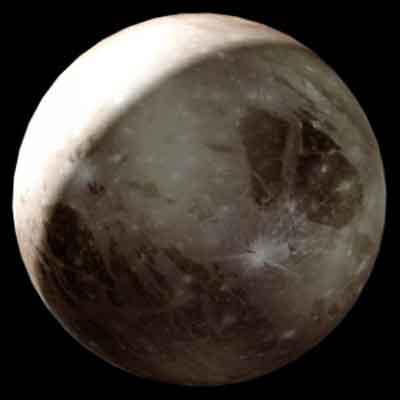
Washington, US (BBN) - Mysterious, dwarf planet Pluto is once again the subject of scientific intrigue after new studies published this month suggest that the freezing planet could harbor life within a subsurface ocean.
Scientists say that Pluto likely hosts a subsurface ocean of ammonia, a compound that we on Earth don’t think of as conducive for life, but some researchers say could conceivably spawn life on celestial bodies such as Pluto, reports The Christian Science Monitor.
“New Horizons has detected ammonia as a compound on Pluto’s big moon, Charon, and on one of Pluto’s small moons. So it’s almost certainly inside Pluto.
What I think is down there in the ocean is rather noxious, very cold, salty and very ammonia-rich — almost a syrup,” said William McKinnon, the author of two Pluto studies published this month in the journal Nature.
“It’s no place for germs, much less fish or squid, or any life as we know it,” he added. “But as with the methane seas on Titan — Saturn’s main moon — it raises the question of whether some truly novel life forms could exist in these exotic, cold liquids.”
Researchers used data collected by the spacecraft New Horizons during its flybys of the planet and its moons over the past two years.
A study published earlier this year gave additional evidence for the existence of a subsurface ocean on Pluto - tectonic activity on the dwarf planet suggested that Pluto was expanding, not contracting. In this case, researchers argued, expansion was likely to mean that Pluto continues to host a shifting, subsurface ocean.
What New Horizons showed was that there are extensional tectonic features, which indicate that Pluto underwent a period of global expansion,” graduate student and study author Noah Hammond said in a Brown University press release. “A subsurface ocean that was slowly freezing over would cause this kind of expansion.”
When scientists speak of planetary oceans, however, they generally do not mean the kind of ocean a layperson might imagine - an ocean conducive to swimming, splashing, and even fishing. Instead, planetary oceans are far more likely to be composed of liquid methane, ammonia, or nitrogen than the water we are familiar with on Earth.
If you're going to talk about life in an ocean that's completely covered with an ice shell, it seems most likely that the best you could hope for is some extremely primitive kind of organism. It might even be pre-cellular, like we think the earliest life on Earth was," Dr McKinnon said, according to a Washington University of St Louis press release.
The levels of ammonia present on Pluto, however, might be antithetical to even the most basic forms of life. In order to prevent such a cold ocean from freezing, scientists say that ammonia levels on Pluto would be extreme.
Researchers say that more study is necessary in order to prove or disprove the presence of an ocean or marine life on Pluto.
"All of these ideas about an ocean inside Pluto are credible, but they are inferences, not direct detections," McKinnon said, sounding the call. "If we want to confirm that such an ocean exists, we will need gravity measurements or subsurface radar sounding, all of which could be accomplished by a future orbiter mission to Pluto. It's up to the next generation to pick up where New Horizons left off!"
BBN/MS/ANS